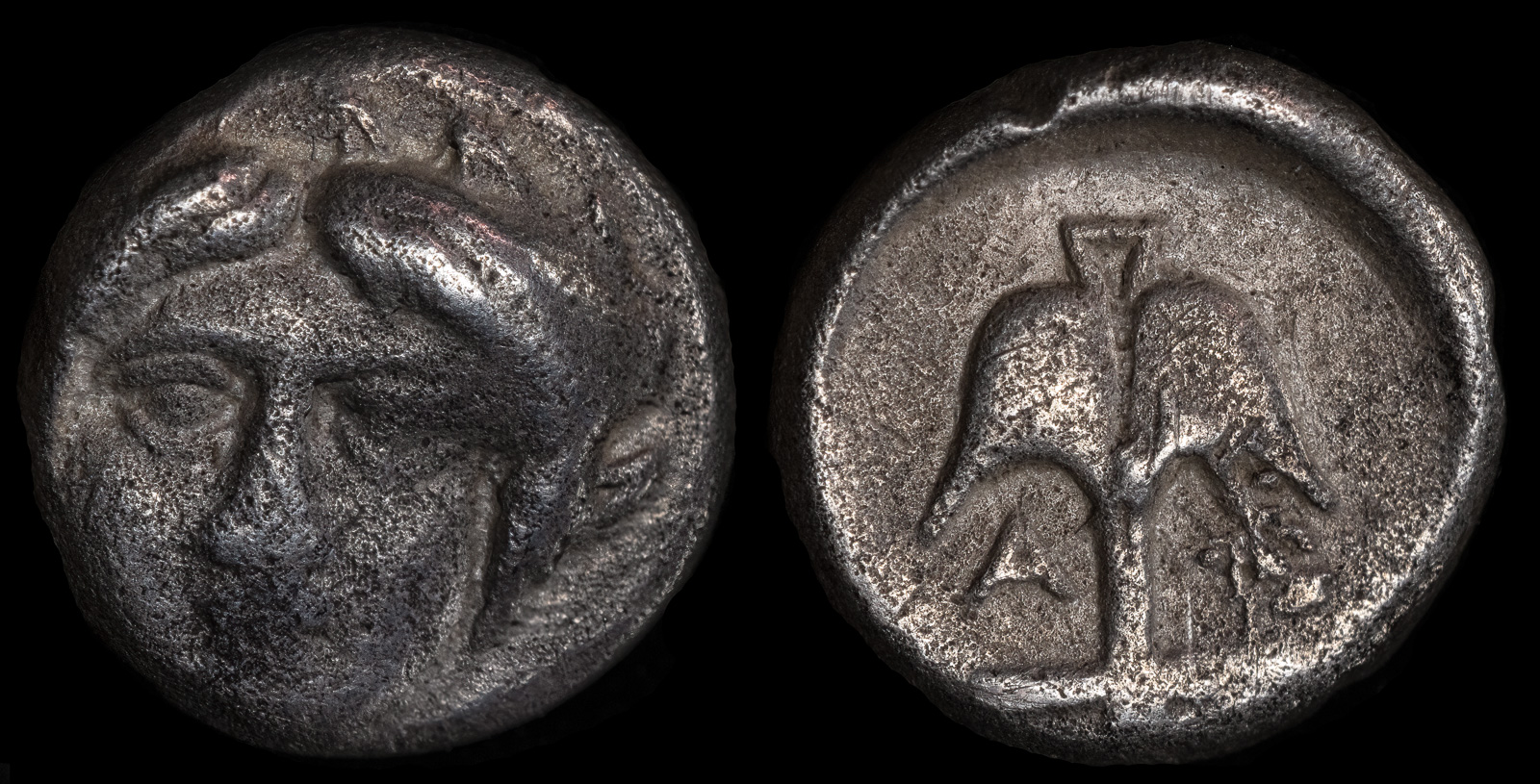
THRACE, Apollonia Pontika
Mid 4th century BCE
AR Diobol 1.2 gm, 10mm, 12h
Obv: Facing gorgoneion.
Rev: Upright anchor; A to left, crayfish to right.
Topalov, Apollonia p. 386, 3; SNG BM Black Sea 167
The city was founded by settlers from Miletos and named Antheia. Eventually, it was renamed Appolonia for Apollo, who received a thirteen meter high statue in the center of the city and multiple temples. That statue was later removed by the Romans to Rome, where it stood until destroyed by Christians.
Coinage from Appolonia is common, primarily because it was such a rich port due to its trade between the Greek cities and the Odrysian kingdom. Messembria were their chief rivals. Later, during the times of Philip II and Alexander III, Appolonia managed to remain independent even though the Odrysian kingdom was divided and conquered.
Appolonia Pontika is now the city of Sozopol in Bulgaria.
The gorgon, depicted on this coin, was intended to scare people. Interestingly, as time progressed, the gorgons on coinage became less and less scary.